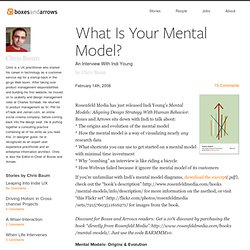

Persona (user experience) In marketing and user-centered design, personas are fictional characters created to represent the different user types within a targeted demographic, attitude and/or behavior set that might use a site, brand or product in a similar way.

Marketers may use personas together with market segmentation, where the qualitative personas are constructed to be representative of specific segments. The term persona is used widely in online and technology applications as well as in advertising, where other terms such as pen portraits may also be used. Personas are useful in considering the goals, desires, and limitations of brand buyers and users in order to help to guide decisions about a service, product or interaction space such as features, interactions, and visual design of a website. A user persona is a representation of the goals and behavior of a hypothesized group of users. In most cases, personas are synthesized from data collected from interviews with users.
Carroll, John M. Mental models. Open Access We believe in Open Access and the democratization of knowledge.

Unfortunately, world class educational materials are normally hidden behind payment systems or in expensive textbooks. If you want this to change, you should help us out! Kind thoughts are not enough - you need to act! We do NOT use copyright as a restrictive instrument, but as an instrument to protect the author against misuse while encouraging redistribution and use of his/her work.
Except as otherwise noted, this work is copyright of and The Interaction Design Foundation (Chr. The Creative Commons Attribution-ShareAlike Licence The Interaction Design Foundation Addendum to the Creative Commons licence ...with the exception of materials described in "Exceptions" Furthermore, your use of Interaction-Design.org signifies your consent to: the "Site Terms and Conditions" the "Site Privacy Policy" License 1. 2. 3. The above rights may be exercised in all media and formats whether now known or hereafter devised. 4. Mental Models. There is no single methodology for creating the perfect product—but you can increase your odds.

One of the best ways is to understand users’ reasons for doing things. Mental Models gives you the tools to help you grasp, and design for, those reasons. Adaptive Path co-founder Indi Young has written a roll-up-your-sleeves book for designers, managers, and anyone else interested in making design strategic, and successful. Indi Young’s new book is a welcome addition, covering an aspect of the design process that is extremely important but often neglected. The book is chock-full of practical advice derived from real-world development projects, but doesn’t lose sight of the broad conceptual underpinnings. What Is Your Mental Model? Rosenfeld Media has just released Indi Young’s Mental Models: Aligning Design Strategy With Human Behavior.

Boxes and Arrows sits down with Indi to talk about: * The origins and evolution of the mental model * How the mental model is a way of visualizing nearly any research data * What shortcuts you can use to get started on a mental model with minimal time investment * Why “combing” an interview is like riding a bicycle * How Webvan failed because it ignore the mental model of its customers If you’re unfamiliar with Indi’s mental model diagrams, download the excerpt(.pdf), check out the “book’s description”: for more information on the method, or visit “this Flickr set”: for images from the book. Discount for Boxes and Arrows readers: Get a 10% discount by purchasing the book “directly from Rosenfeld Media”: Just use the code BARMMM10. Mental Models: Origins & Evolution Boxes & Arrows: Our readers would benefit from the story behind the Mental Model.
B&A: Interesting. Comparing Methods.
Consumer journey maps.